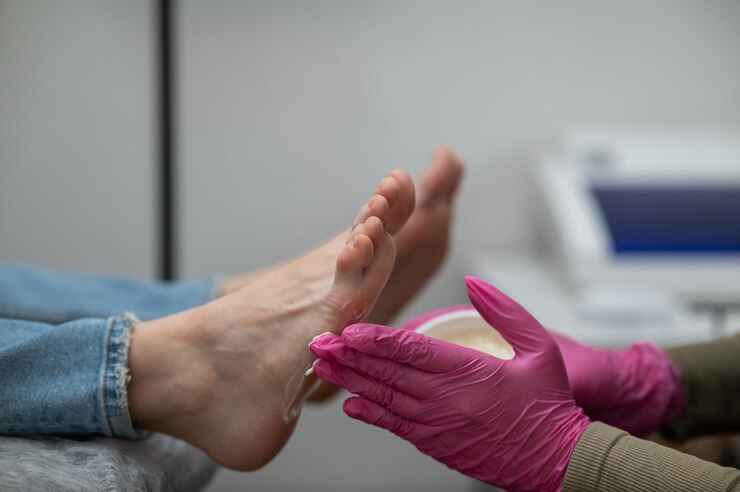Bunion surgery can be a significant turning point for individuals suffering from the painful foot condition known as a bunion. While the procedure aims to relieve discomfort and correct the alignment of the toe, the recovery process can present its own set of challenges. This comprehensive guide will walk you through bunion surgery recovery, including tips, managing pain, and returning to daily activities.
Understanding Bunion Surgery
Bunion surgery, also known as bunionectomy, is a procedure performed to remove the bony bump at the base of the big toe. The surgery may involve realigning the bones of the toe, removing inflamed tissue, or in severe cases, fusing bones together. While many people experience significant relief from pain and improved foot function after the surgery, it’s essential to approach the recovery period with care and preparation.
What to Expect Immediately After Surgery
Following bunion surgery, you will likely experience some swelling, bruising, and discomfort in the operated foot. These symptoms are normal and usually subside over time. It’s common to wear a special surgical shoe or boot for several weeks to protect the surgical site and provide stability. You may also be instructed to keep your foot elevated to minimize swelling.
Pain management is an important aspect of recovery. Your healthcare provider will likely prescribe pain medications or recommend over-the-counter options to help control discomfort. It’s crucial to follow the prescribed dosage and timing to ensure effective pain relief.
The Importance of Rest and Elevation
Resting your foot is vital during the initial recovery phase. Most surgeons recommend limiting weight-bearing activities for a certain period, typically ranging from a few days to several weeks, depending on the extent of the surgery. Using crutches or a walker can assist you in getting around without putting pressure on your foot.
Elevating your foot above heart level as much as possible can significantly help reduce swelling and promote healing. Consider propping your foot up on pillows while sitting or lying down. This practice not only alleviates discomfort but also aids in the overall recovery process.
Wound Care and Hygiene
Proper wound care is crucial for preventing infection and ensuring optimal healing. Follow your surgeon’s instructions regarding dressing changes and cleaning the surgical site. Keep the area dry and avoid submerging it in water until you receive clearance from your healthcare provider.
Watch for signs of infection, such as increased redness, swelling, or discharge from the incision site. If you experience a fever or worsening pain, contact your healthcare provider promptly.
Gradual Return to Activities
After the initial recovery phase, you will gradually be allowed to resume activities. The timeline for returning to normal activities can vary based on individual healing rates and the type of surgery performed. Physical therapy may be recommended to help restore strength and flexibility to the foot.
Start with gentle exercises and stretches to improve mobility. It’s essential to listen to your body and not rush the process. Gradually increase the intensity of your activities as advised by your healthcare provider or physical therapist.
Managing Pain and Discomfort
While some pain is expected after bunion surgery, there are several strategies you can employ to manage discomfort. In addition to prescribed pain medications, consider applying ice packs to the affected area for 15-20 minutes at a time, several times a day. This can help reduce swelling and provide relief.
Wearing comfortable, supportive footwear that accommodates swelling is also essential during the recovery process. Avoid high heels or tight shoes until your foot has fully healed.
Nutritional Support for Healing
Proper nutrition plays a crucial role in the healing process. Consuming a balanced diet rich in vitamins and minerals can help expedite recovery. Focus on incorporating foods high in protein, vitamins C and D, and calcium, as these nutrients are essential for bone healing and tissue repair.
Stay well-hydrated, as proper hydration can also promote healing. If you have specific dietary concerns or restrictions, consider consulting a nutritionist for personalized guidance.
Psychological Considerations
Recovering from surgery can be an emotionally challenging experience. It’s common to feel frustration or anxiety during the healing process, especially if progress seems slow. Stay connected with supportive friends and family members, and consider discussing your feelings with a healthcare professional if you’re struggling.
Engaging in activities that you can do while resting, such as reading, watching movies, or pursuing hobbies, can help keep your spirits up during recovery.
Conclusion
Navigating life after bunion surgery requires patience, proper care, and attention to your body’s signals. By understanding the recovery process, prioritizing rest and elevation, and managing pain effectively, you can set yourself up for a successful healing experience. Remember, while the journey may have its challenges, the relief from bunion pain and the ability to return to your favorite activities will be worth the effort. Stay positive, follow your healthcare provider’s recommendations, and take each day as it comes on your road to recovery.





Comments